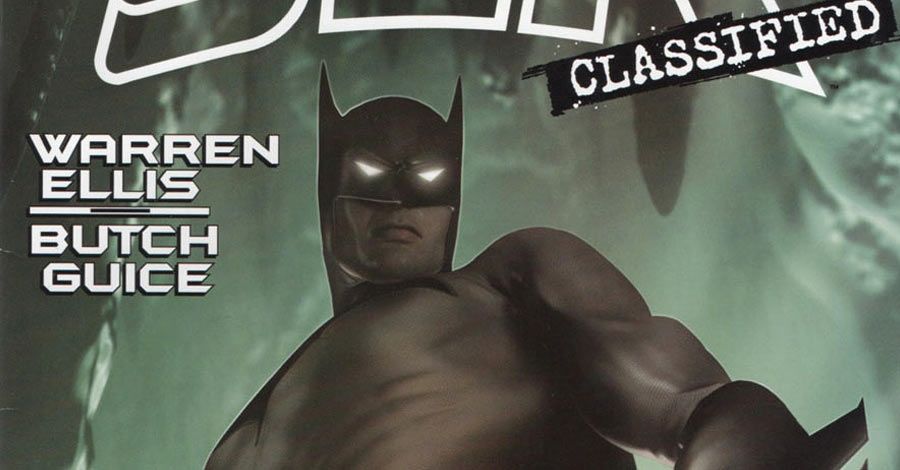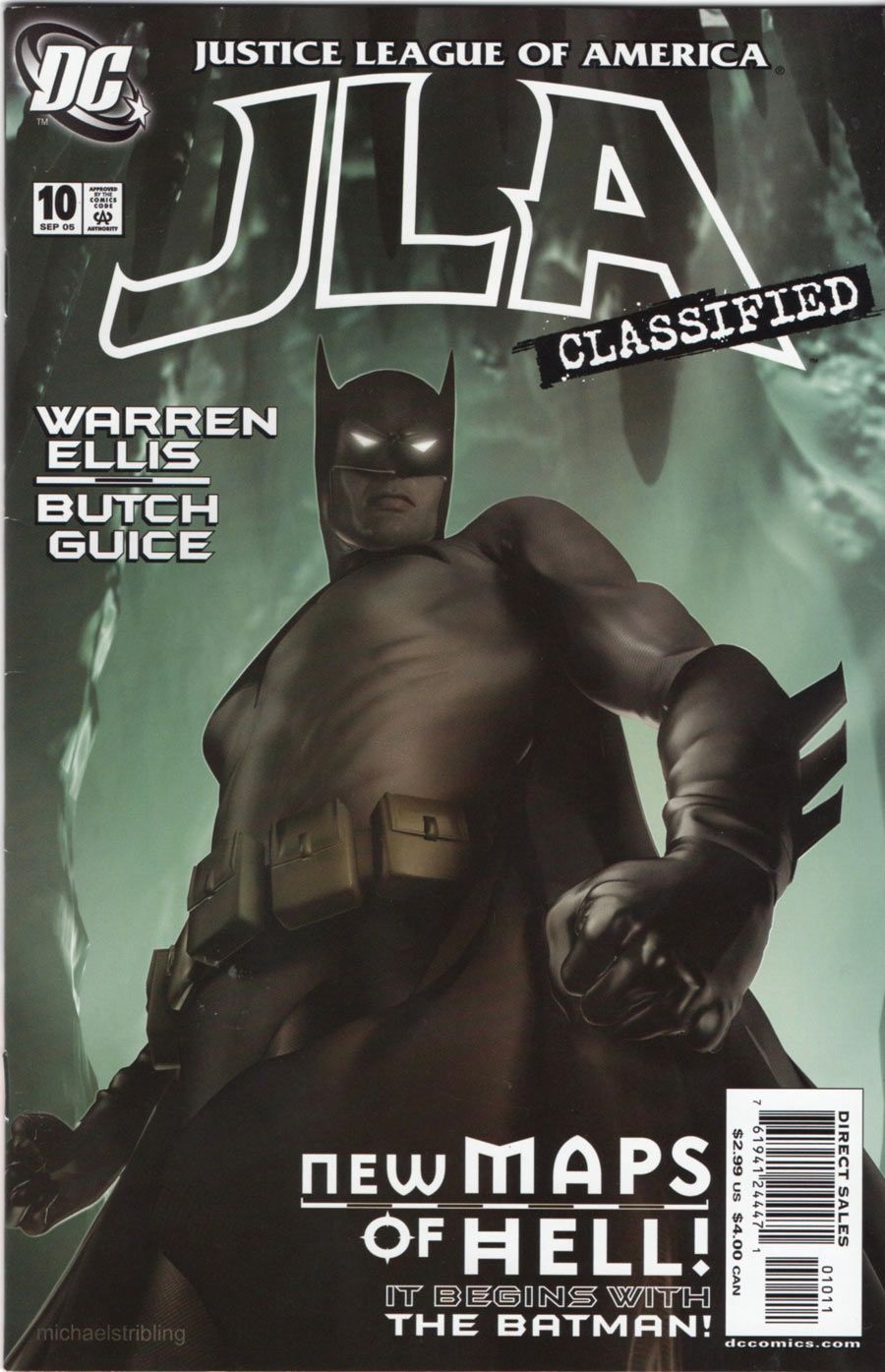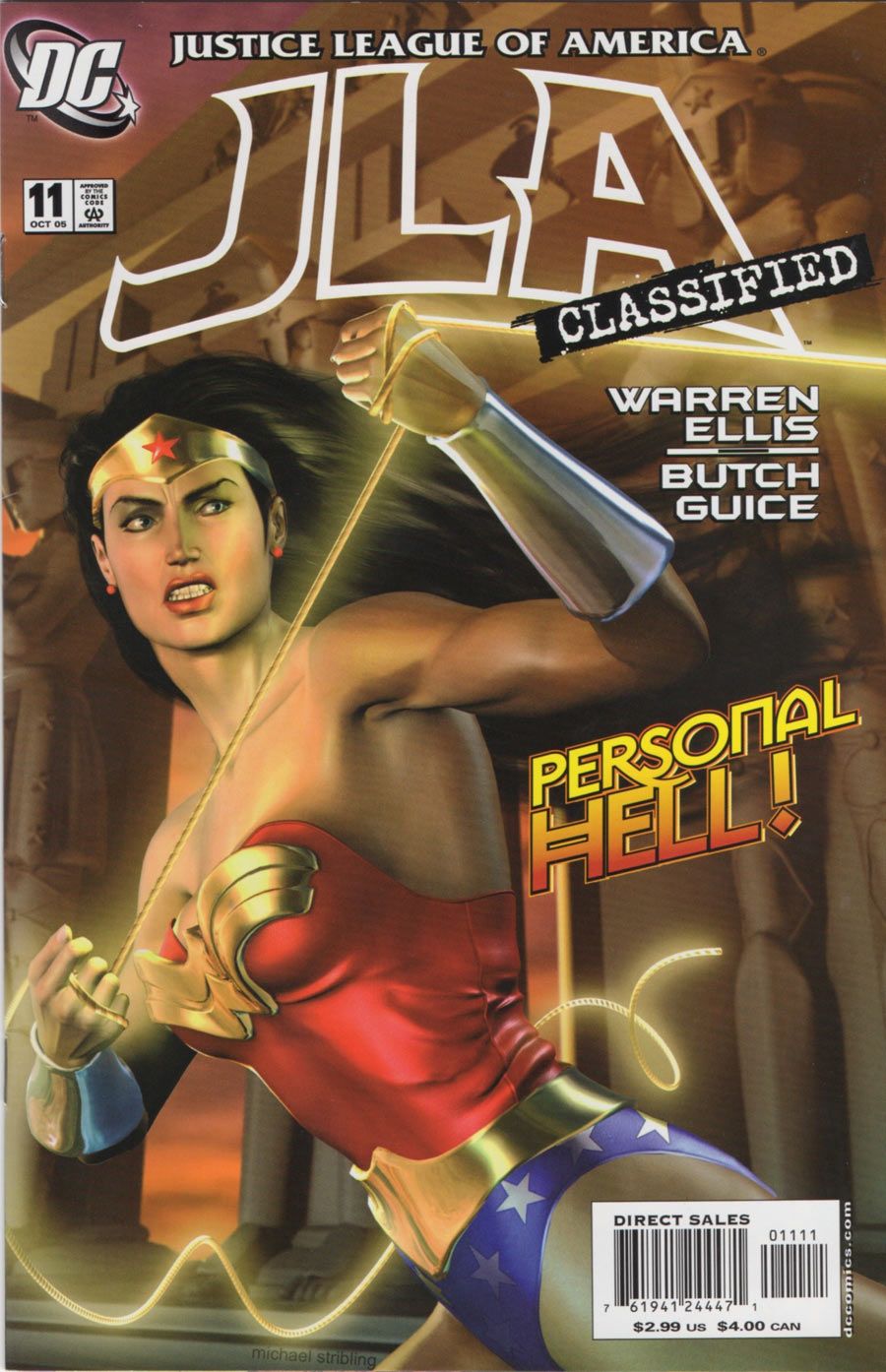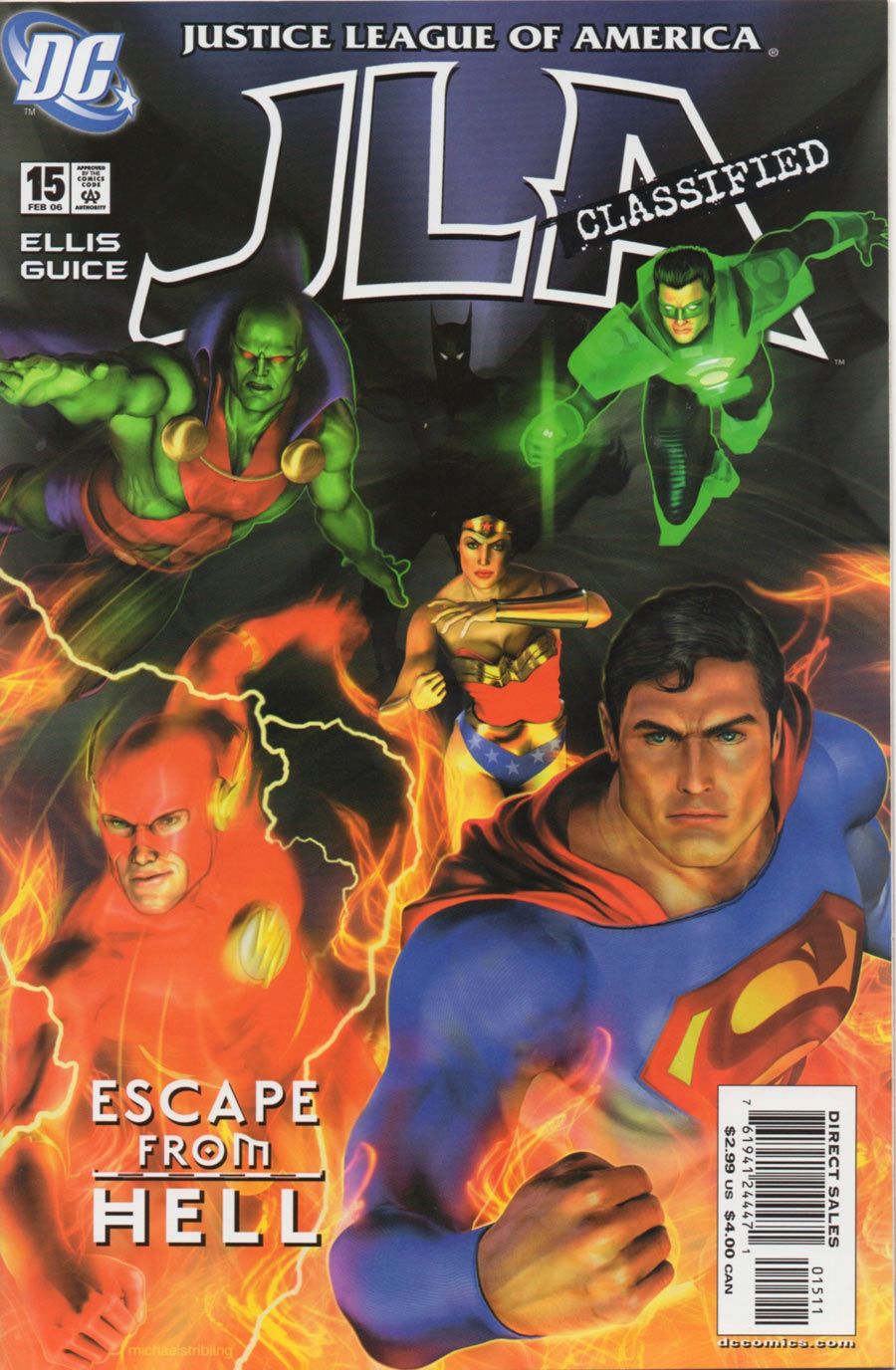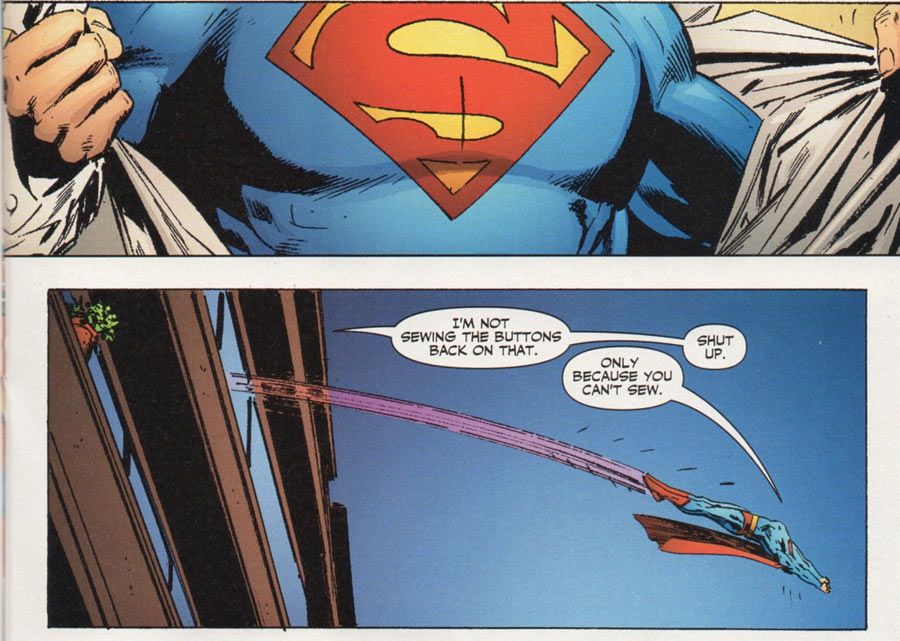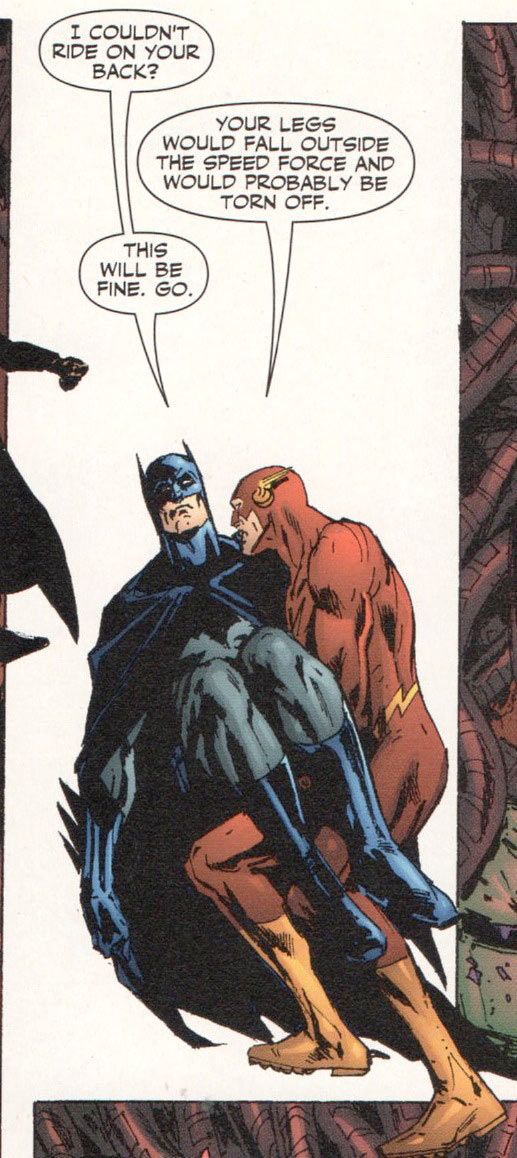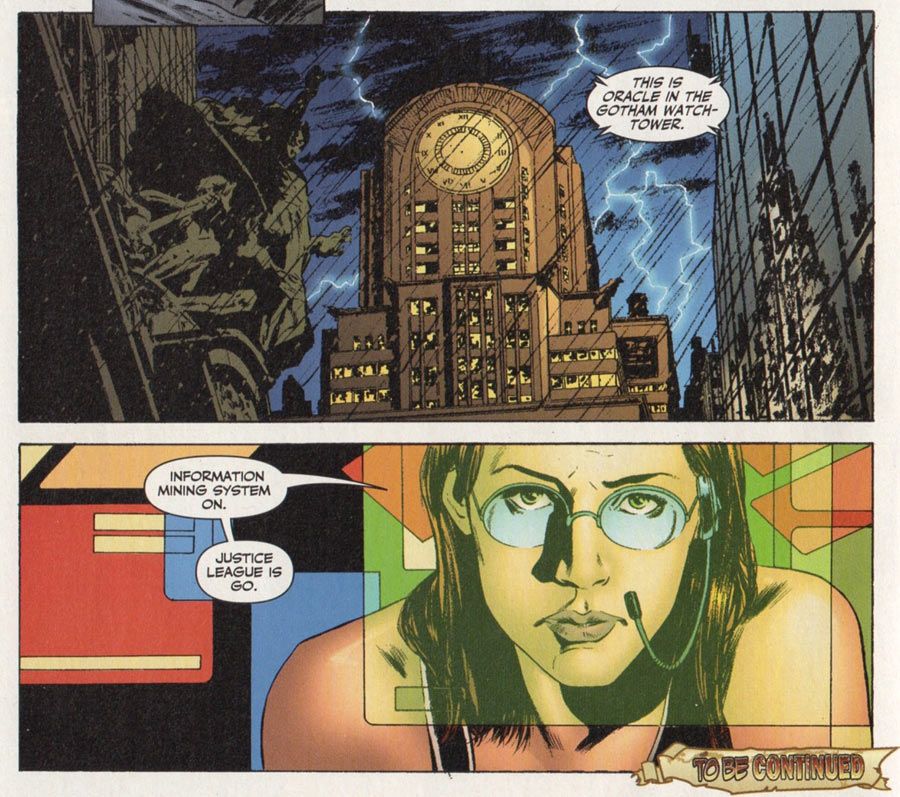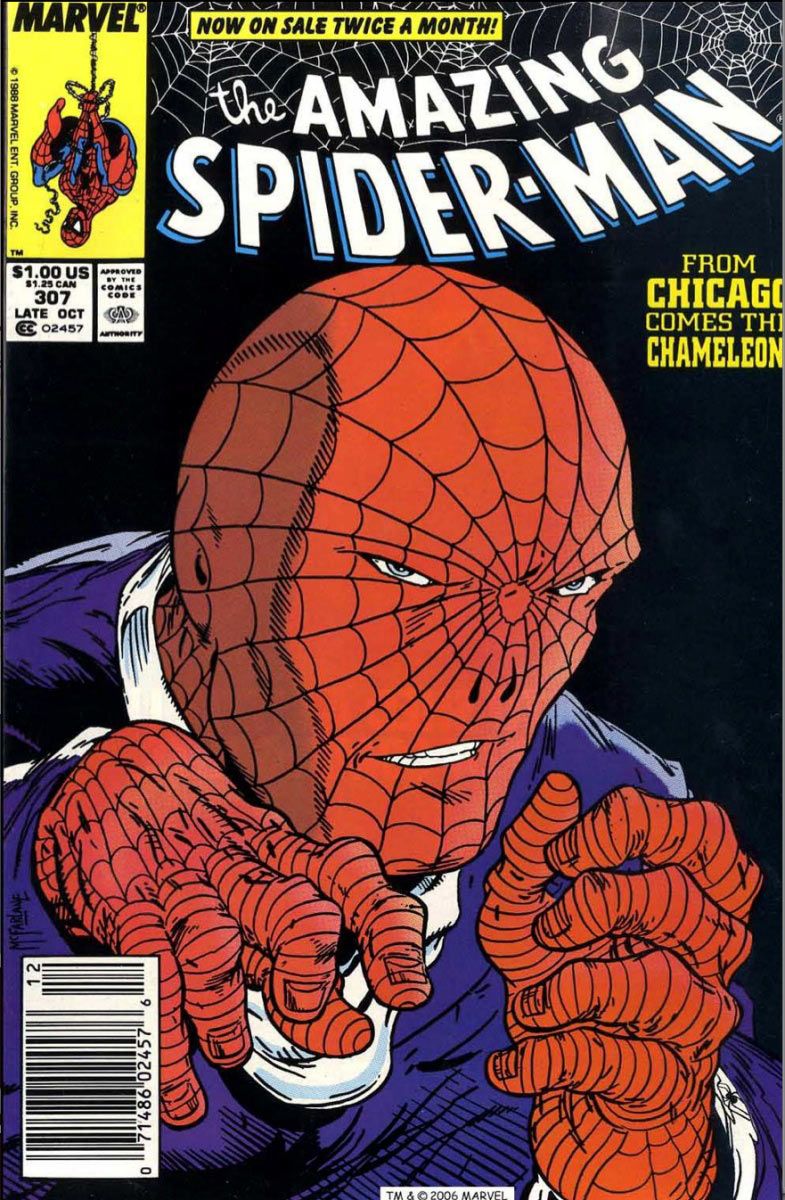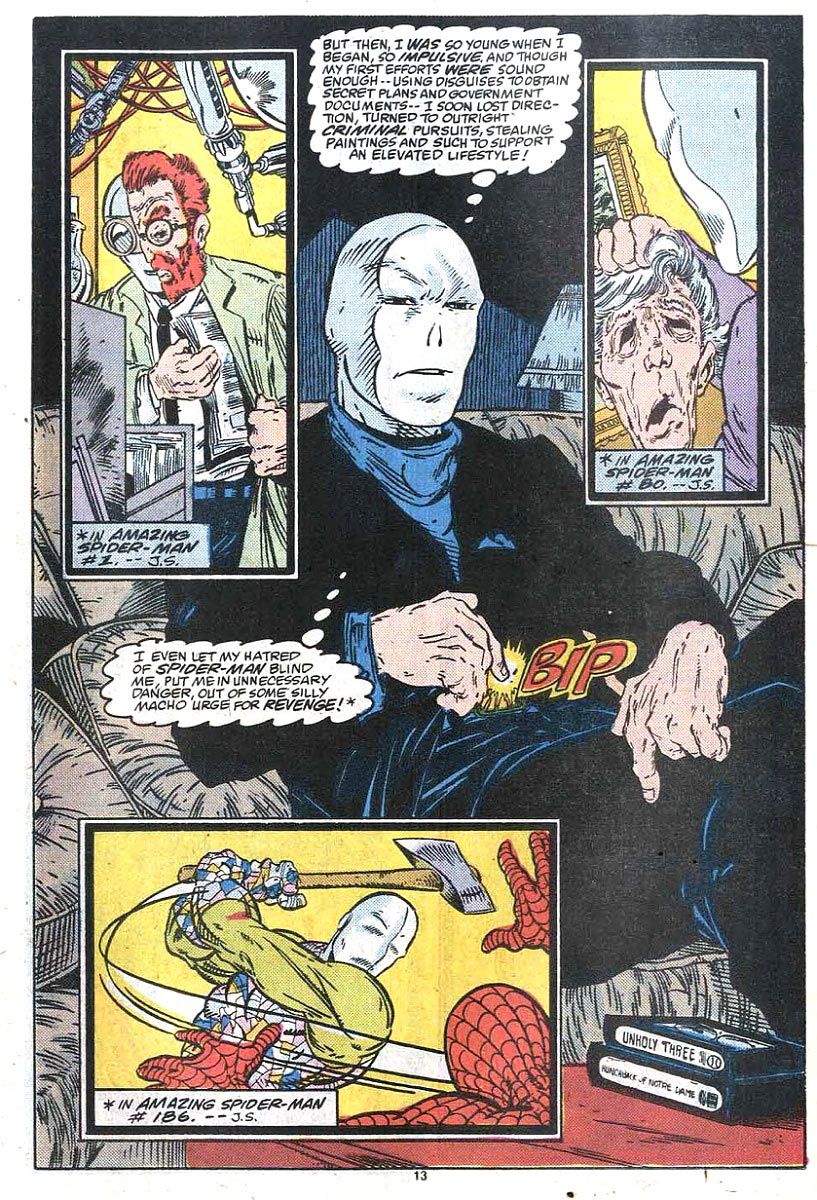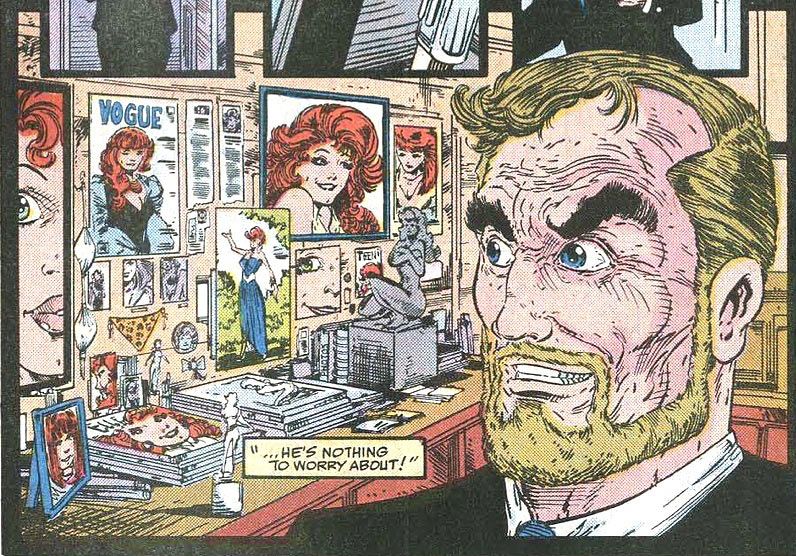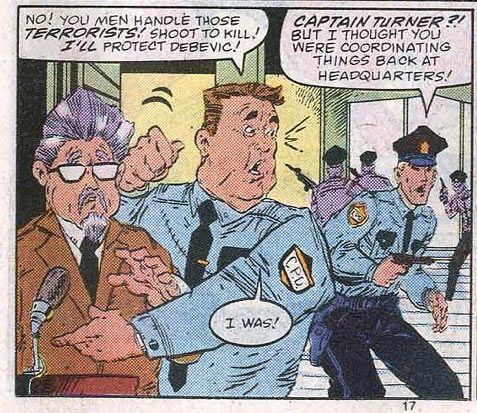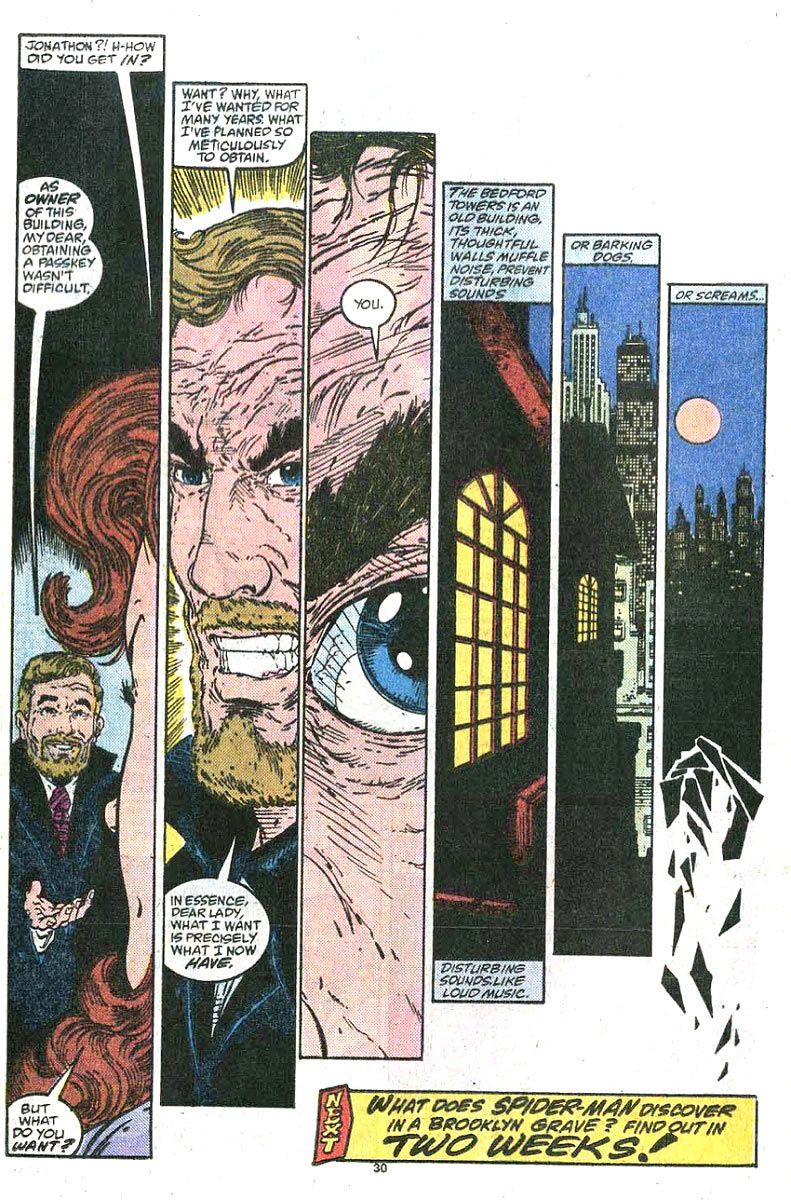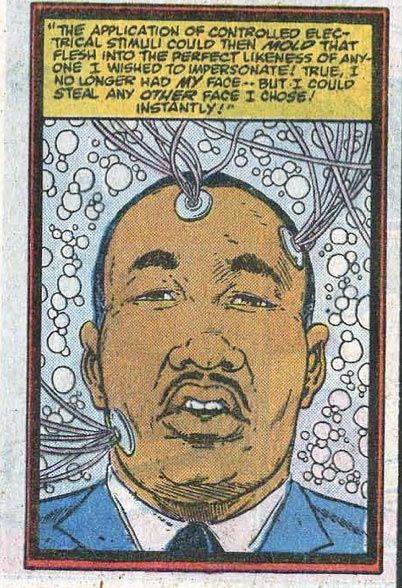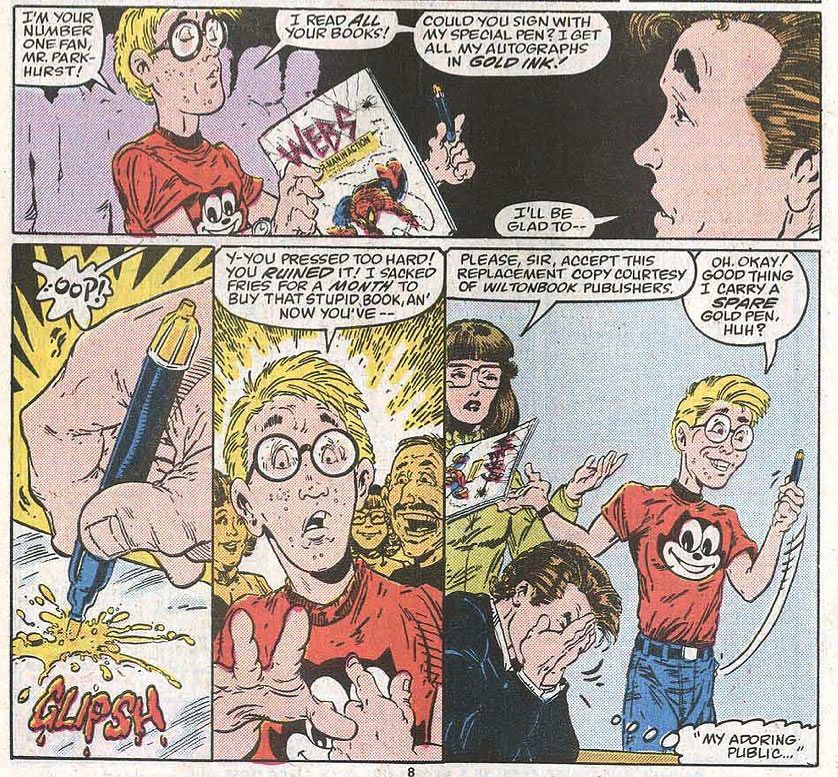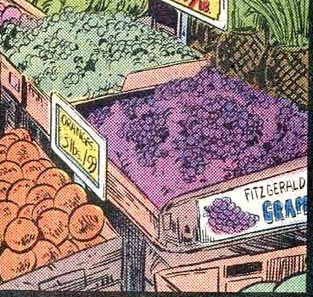THE MOST WARREN ELLIS COMIC OF 2004
"JLA Classified" was the anthology series DC put together a decade ago to throw all of its short stories and miniseries into one monthly series. It began with a three-part Grant Morrison story (illustrated by Ed McGuinness), then gave Keith Giffen/J.M. DeMatteis/Kevin Maguire a home for a wayward Bwah-Ha-Ha story follow-up to the series I reviewed last week. That one had to be temporarily sidelined due to the events of "Identity Crisis" before finding safe harbor in "Classified." We'll talk about that story another time.
After that came "New Maps of Hell," a six part story from Warren Ellis and Butch Guice, with Dave Baron on colors. As a time capsule to early 2000s storytelling and Ellis' unique voice, there's no better example. This thing screams of its influences and of its writer's particular interests and style. It's not the most original story at all, but Ellis does enough with it to make it feel clever and entertaining.
For starters, Ellis does not write a classic superhero versus supervillain story. He's more interested in a speculative fiction kind of story, with a mystery that needs to be puzzled out in order for the characters to save their own lives and the world. It's not a simple supergroup versus supergroup fistfight to the end. There is a sort of evil villain challenging the JLA in the book, but he's cloaked in so much high concept dressing that you don't realize at first that he's the equivalent of every computer James T. Kirk had to confuse with logic to defeat at the end of a "Star Trek" episode. And, to be fair, this one's smarter. When he's defeated, he moves the goal posts and reneges on his deal.
The story leans heavily on the kinds of ideas and concepts Ellis helped to popularize a decade ago. The first place I ever saw the word "meme" was on the Warren Ellis Forum, and it seemed to spread from there. This story deals with a meme that kills, of a sort. Let's run a few quotes from issue #12 that explain the challenge the JLA is up against:
"Ideas are viruses. Contagious. And viruses are nothing but biological machines."
"Decoding the text would activate a memetic machine."
"The idea-technology was suspected to be a system that brought back the devil."
So you get to mix in religion, science, medicine, and the fantastic all at once. Sounds right up Ellis' alley. It's a science fiction concept that the JLA has to do battle against. Rather than taking inspiration from earlier comics, Ellis brings in matters from other media and genres.
In the end, when the team has to work together to defeat the bad guy, there's talk of parallelizing their brains and distributing the load. You also have to love "broadband telepathy" at a time when broadband internet wasn't quite yet omnipresent.
He then dresses it up with his classic dialogue style, giving characters lots of abrupt one-liners that come out completely matter of factly, but that make the reader either cheer or laugh, depending on the intention. It works. I could excerpt a dozen panels for this column just off the top of my head with great moments. There will be trolls who see those lines as being out of character, but I think the lines work so well because they play with the character types well. Even Lois and Clark's little bickering has so much love behind them that you'll just giggle and let it fly by.
But, then, I just wrote a thousand words last week on why I loved Bwah-Ha-Ha Justive League so much. Maybe I'm just more open to different interpretations . . .
Ellis plays with classic team superhero structure, spending the first issue or two gathering the team together. The six heroes are seen separately, each having an explosive incident that would be the spark for the mystery they need to come together to solve. Then, the team works together to identify the problem and line up against it, only for the villain to separate and isolate the characters, who then must each solve their own unique problems on the way to coming back together to beat up the bad guy once and for all.
You've seen it a million times, I'm sure. My best frame of reference for this structure would have to be Chris Claremont's classic X-Men run (think of a good Arcade story), though there's even shades of it in the Giffen/DeMatteis JLA story I reviewed last week. Weirdly enough, like the story that came just before this one in "JLA Classified," this one features characters believing they're in Hell until they convince themselves that they aren't.
Ellis adds Oracle to the mix, letting her guide some of the action and being the dramatically resourceful knowledge source she always is. She would have fit well into "Global Frequency," don't you think? This voice sounds right.
The story structure is flexible, of course. It's how you use it that will define how successful your story is. In the Bwah-Ha-Ha series, it's used to generate long-winded conversations to evoke maximum laughs based on drastic simplifications of characterization. With this one, Ellis often steps aside to let Butch Guice shine. Along with David Baron's bright and bold colors, Guice takes control of the narrative often, with strong superpowered beings striking heroic posts alongside explosions that provide visual interest. Guice inks himself here, giving his art a gritty look, often inking things like they were done with charcoals. Guice dances a fine line between photorealism and epic superhero strength, but stays on the right side of that line most of the time. A few characters look blatantly caricatured from real life, but most of it stays abstracted away enough.
Ellis explores manga-style decompression, which was growing in popularity at the time. Small, quiet moments can be dragged out to take over a whole page or two to convey its importance. The problem is, the end results seem too disjointed. It distracts from the moment. When the League marches on the White House, for example. the first three quarters of the first page is a close-up on the JLA's feet. When we're introduced to Batman, it's over the course of two pages and a dramatic swoop in from extreme wide angle of Gotham City into the windows of Wayne Manor. When the story opens with a man jumping to his death, we get two pages to watch his fall. It's more than is necessary, though Guice renders it well. In retrospect, this book looks like something Ellis experimented with his toolkit on. He's trying the decompression in a few different settings to see where the dramatic emphasis can be found. It doesn't always work, though Guice always makes it look good.
Ellis and Guice also do a quick one page experiment with Flash's powers. In issue #12, The Flash runs out to look at something, followed by two lines of dialogue. On the next page, when he reports back, we've actually flashed back a panel in time, and the last line uttered in the panel after Flash ran out is repeated here in the panel when Flash reports back in. The story you're reading feels perfectly linear, but with a character running in the Speed Force like Flash, such distance runs are so quick as to be instantaneous. This is one extra trick to show that.
Also of its time are the covers by Michael Stribling. They look like they were done with computer painting, probably with Poser. It leads to a bunch of slick, stiff, action figure characters looking plastic on the page. The results are not impressive at all. In 2004, painted covers were already old hat, but I suppose digitally painted covers were new. Stibling went all the way, right down to the artist's signature being typed on. These are not great examples of the medium, though.
There was a "JLA Classified: New Maps of Hell" trade paperback out a few years back. It's out of print now, though, but you might find it at a convention or the dusty corner of a comic shop bookshelf somewhere. It's not the most groundbreaking or perfect JLA story ever, but it's very entertaining. Ellis tells a credible story and has a lot of fun with the dialogue, while Guice draws an awe-inspiring League.
AMAZING SPIDER-MAN #307: "The Thief Who Stole Himself"
The Chameleon meets Spider-Man in Chicago and doesn't get caught. Jonathan Caesar proves to be more trouble than earlier thought.
There's a big pacing problem with this issue. After a two-page introduction to who the Chameleon is currently masquerading as (only for that to be dropped immediately), Chameleon sits in a chair and delivers a three page monologue to explain to the reader how awesome and sad he is all at the same time.
It all ends with, "I now have the power, the purpose, and the mobility to bring about a long-delayed destiny -- the utter destruction -- politically, economically, and strategically -- of the United States of America!"
So, yeah, Chameleon doesn't think small.
McFarlane illustrated that last point with a tattered flag hanging over the Capitol Building in flames, a motif he'd return to later in his run.
After all of that (plus a couple assorted random Peter Parker scenes and the reveal of Jonathan Caesar's psychotic nature), the big action set piece ensues. Chameleon makes his move to kidnap a top scientist in the field of superconductivity. (Remember when that was the next big thing?) In the process, he runs Spider-Man through a Science Expo hall and out onto the street, where -- Chameleon gets away scott free, though without his intended prey. I suppose it's good that Spider-Man saved the innocent scientist, but it felt like a walk in the park for him. There is one tense moment where he webs up a bomb to block an explosion, but there are no ramifications to that. Things just keep plowing forward.
The big event happens at the end of the issue where Mary Jane wraps up a swimsuit photoshoot -- because, hey two panels of Todd McFarlane drawing a woman in a bikini -- before she returns home to discover the creepy Jonathan Caesar waiting in her apartment to kidnap her. I'll say this for McFarlane: while the scene is a little cheesy and over the top, he handles it well. Zooming to the outside of the building after the extreme close-up on Caesar's eye, along with the disintegrating panel at the end really sells the situation without exploiting it.
This issue feels like such a waste that I have little excitement to write more about it.
Here's one note of improvement for McFarlane, though: After horrible celebrity caricatures in previous issues (Johnny Carson made everyone wince), he did a fine job with Martin Luther King, Jr., one of Chameleon's flashback disguises:
Reprint Watch: The scans you see with this column come off the CD set that was sold more than a decade ago, compiled off scans of the original comics. The Omnibus rescanned everything and duplicated the original colors to look more modern. This issue in the Omnibus, though, looks a little too saturated. It's like they turned the black slider up too high. The inks are too dark and the colors are uniformly darker than the original comics. It gives the art a slightly thicker look. It's not horrible, but it is noticeable, especially as McFarlane's inking style uses so many thin lines.
Next week: Peter goes looking for Mary Jane and runs across the Taskmaster, a perfect visual for McFarlane's style...
PIPELINKS
- The latest edition of the Script Notes podcast is out today, and features David Goyer as well as the two writers of the "Captain America: The Winter Soldier" movie. Haven't listened to it yet, myself, but I'm sure it's a good one for the writers out there. As I write this, the podcast has been downloaded, but the web page hasn't been updated yet, so go here and look for Episode #144 when it's out.
- I mentioned Chris Claremont before, so I should note that Sequart's documentary/movie/interview with Claremont is now available, for as cheap as $5. Big X-Men fans will want to pay the $9.99 for the extra three hours of material, though.
- Wizard World has banned certain types of cameras from their convention floors, without special permission. This makes sense, of course, since the show is there to pander to the nerdlebrities who show up to charge for pictures. You can apply for permission to bring an interchangeable lens camera, if you so wish. I imagine I could get one approved if I wanted to, based on journalistic qualifications. But, yeah, this is an ugly anti-fan move. But of course it's one Wizard would make. Never expect anything from them to put the fan first... Nerdlebrities are their business plan, not the fans!
- Papercutz has a new book coming out next week, "Toto Trouble," that looks really good. Mostly, I note it here to remind myself to look for it.
- Boulet is awesome. We already knew that. Even if you can't read the French, this recent comic is another great one. It's anthropomorphic Boulet mixed in with a touch of Francois Schuiten.And if you can make out just the most rudimentary bits of French to see what's going on in this most recent one, it's well worth the read. We've all been in a situation like that, and Boulet tells the story beautifully.
Twitter || E-mail || Instagram || Pipeline Message Board || VariousandSundry.com || AugieShoots.com || Original Art Collection || Google+

